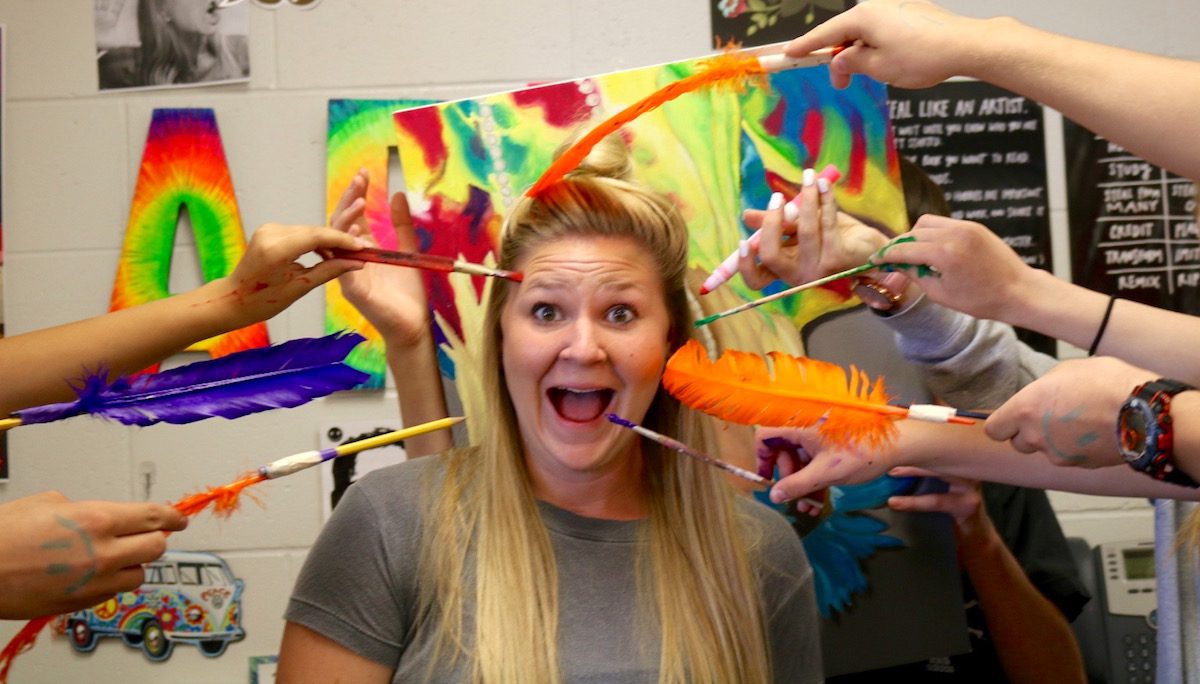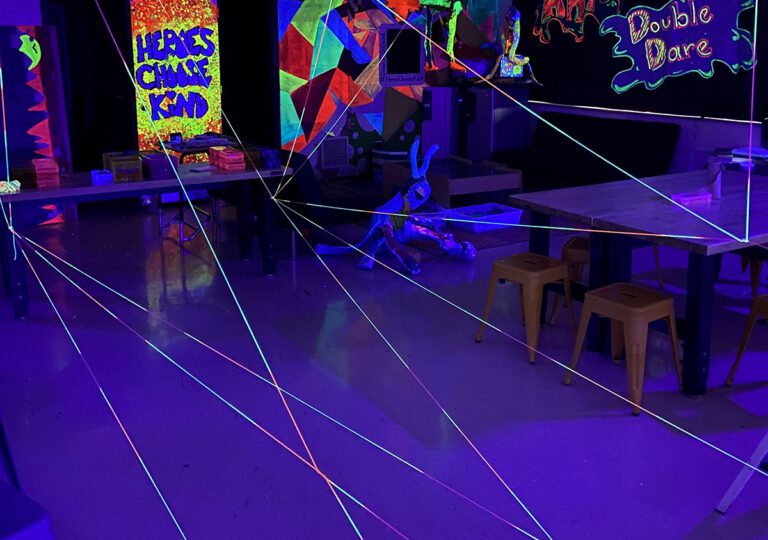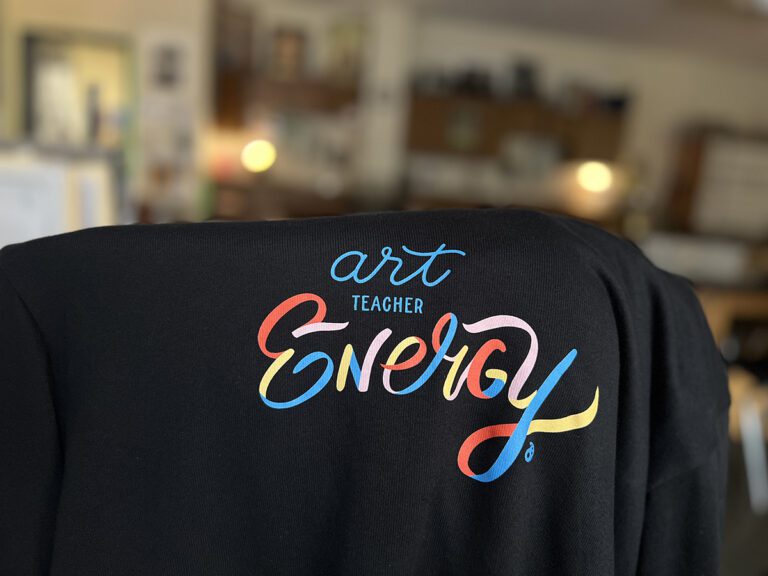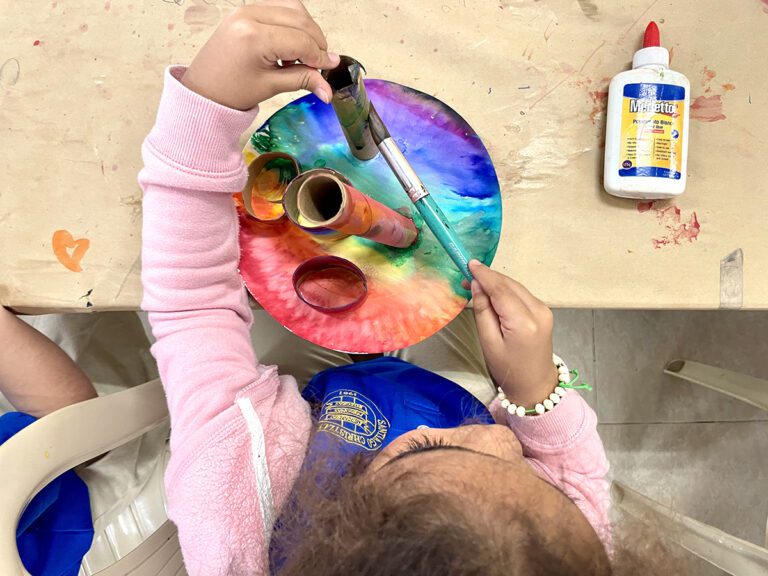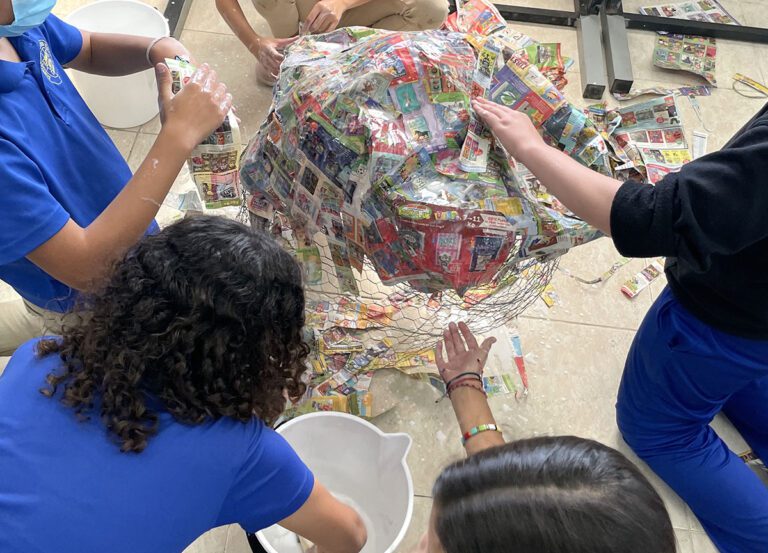Let’s face it, middle school is rough. If you’re a middle school art teacher you understand moments of challenge, triumph, and weirdness can exist simultaneously. Being a middle school art teacher is not meant for everyone, and that’s okay!
If you’ve found yourself struggling with your middle school students, keep these 10 tips in mind.
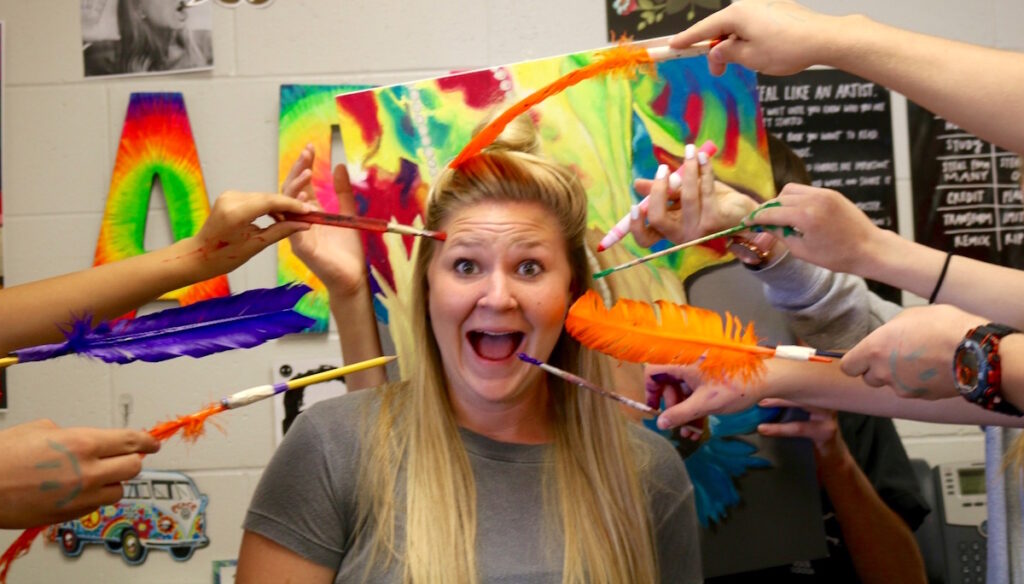
1. Treat Them Like Adults
Middle school students are longing for independence. Give them more responsibility. They don’t need you to distribute paint or label their clay projects anymore. Show them you think they are responsible and let them start doing these tasks independently. At the same time, keep in mind that too many new tasks can still be overwhelming. Instead, gradually give them more responsibilities.
2. Treat Them Like Babies
Wait. Didn’t I just say to treat your students like adults? I did. But when middle schoolers act like babies, treat them like babies. I always tell my students if they can’t handle something, I will lower it to a level they can handle. For example, I recently had a group of 8th graders who struggled with independence and expected to be told what and how to think. In response, I took a 3rd-grade art lesson from my archives and taught this lesson just as I would to a group of 3rd graders. My 8th graders were not happy and showed me they could handle a more advanced approach.
3. Be Unpredictable

Routines are important in the middle school setting, but for the sake of excitement, throw in a curve ball everyone once in a while! This might be as simple as holding art class outside, playing silent ball, or even leaving unexpected, silly notes around the room. Make it interesting and your students will stay engaged!
4. Befriend the “Bad” Kids
It’s no question that one of the most challenging things about middle schoolers is their behavior. The best strategy to build a strong relationship with challenging students is to take an interest in the things they do outside the classroom. This might be talking about a specific band, TV show, sports team, or just asking what they did over the weekend.
I have a group of students that would be considered troublemakers in other classes, but you’d never see it in my room. When I see them at my gym, I shoot a few hoops with them and go on my way. A simple action like this helps to build and strengthen relationships.
5. Don’t Forget About the “Good” Kids
It often seems that the troublemakers overshadow those students that are constantly doing the right thing. Don’t forget about the “good” kids! Much of our day is spent managing behaviors, but remember to acknowledge the kids that are behaving because they truly do notice. One way of doing this is by dropping them a quick thank you note.
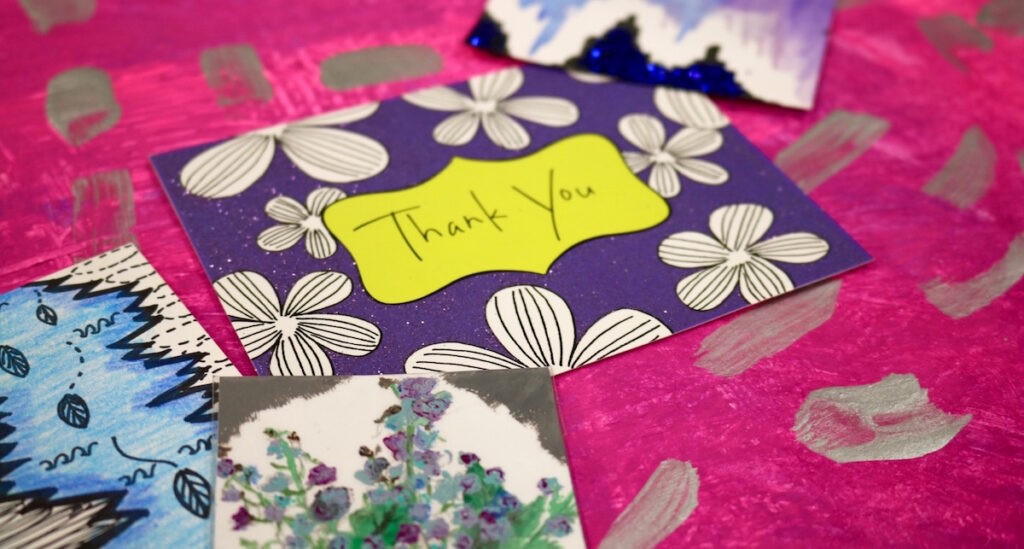
This could be as simple as creating an Artist Trading Card with a note of appreciation on the back.
6. Build a Community
One of the great characteristics of an art class is the melting pot of students found in the classroom. No matter the differences, a positive art room climate can come from a strong sense of community. Building a classroom community can be as simple as how you choose to set up your classroom. One way I encourage a classroom community is by arranging my tables in a u-shape.
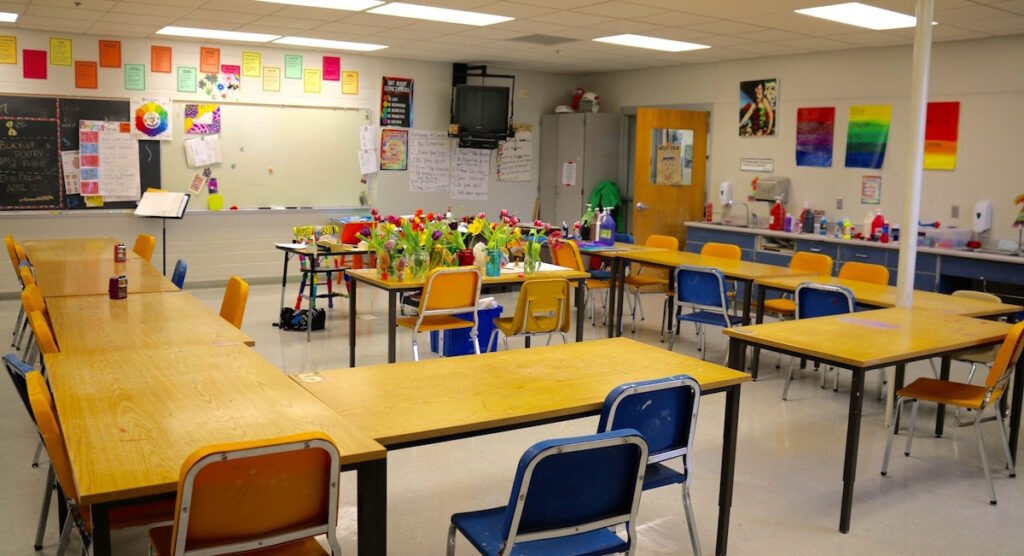
This allows students to see around the room, but it also allows me to be in the center to facilitate a positive environment.
7. Pick Your Battles
Before you correct a behavior ask yourself, “Does it really matter?” We often correct a behavior not because it’s actually affecting the learning environment, but because it’s a personal pet peeve. In these cases, we often escalate the situation. If a student isn’t sitting in their assigned seat but is working on the assigned task, is it really necessary to ask them to move? Learn to pick your battles; it will save you in the end.
8. Don’t Hold Grudges
Don’t dwell on situations that have occurred in prior classes. Start each class with a clean slate. Middle schoolers are dealing with a myriad of emotions. Chances are if you forget about something, they will too. The more respect you show to students, the more likely they are to return the gesture.
9. Create a Democracy
Allow your students to be part of the decision-making process. This could be as simple as voting on project ideas together. Another way to make students feel as if they have a voice is by letting them create their own classroom rules.
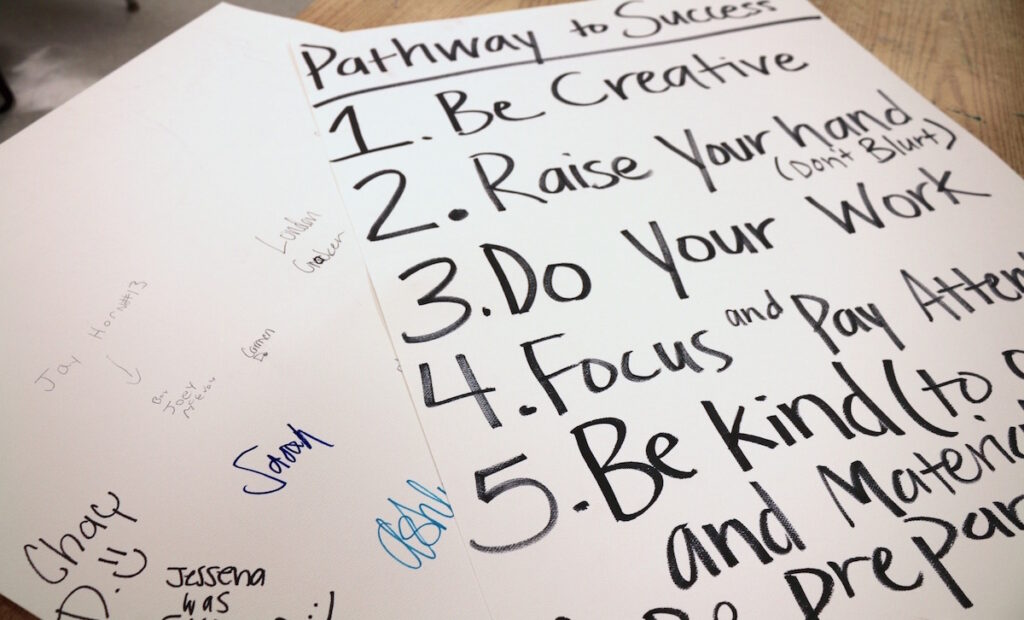
Students know what they need to be successful. Instead of starting the school year by telling the classroom rules, create them as a group. When students make their own rules, they feel more invested in following them.
10. Don’t Forget to Laugh
I’m sure you’ve had one of those moments where you try to hold in a laugh from an inappropriate joke or absurd comment. Sometimes you just need to laugh it out. Those genuine moments when you’re crying because you’re laughing so hard are the moments your students will remember. They might tease you about it later, but your students will forever remember that awesome art teacher!
It’s no question middle school art teachers are special people. At times it’s challenging, but their lack of inhibition and creativity make each day exciting!
What are your favorite strategies when working with middle school students?
What is the best part about being a middle school art teacher?
Magazine articles and podcasts are opinions of professional education contributors and do not necessarily represent the position of the Art of Education University (AOEU) or its academic offerings. Contributors use terms in the way they are most often talked about in the scope of their educational experiences.
